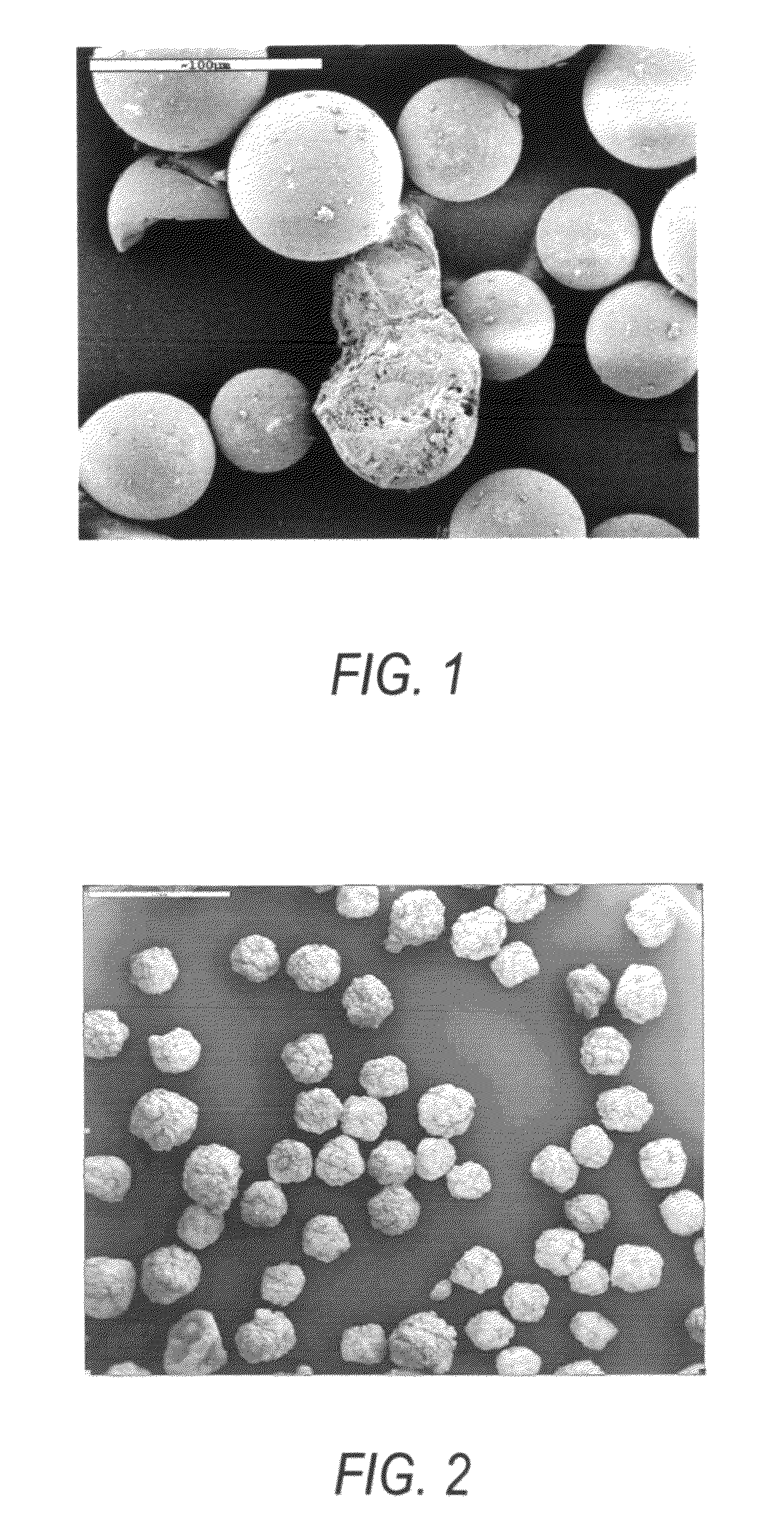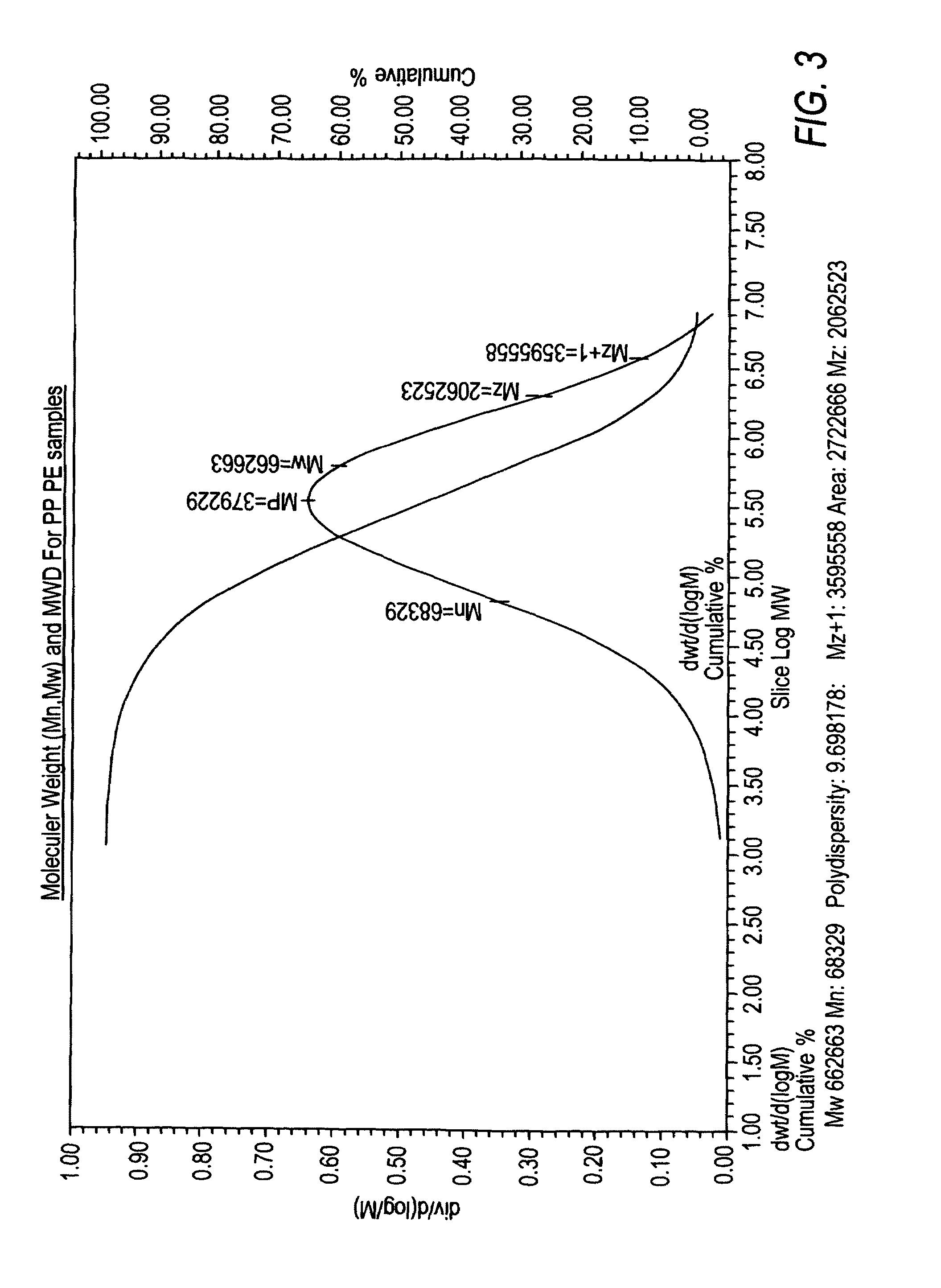Polymer supported chrome catalyst for olefins polymerization
a technology of olefins and catalysts, applied in catalyst activation/preparation, organic compounds/hydrides/coordination complexes, chemical/physical processes, etc., can solve problems such as troublesome process, affecting product properties, optical properties, processing, etc., and achieves fine free, good bulk density, and superior morphology
- Summary
- Abstract
- Description
- Claims
- Application Information
AI Technical Summary
Benefits of technology
Problems solved by technology
Method used
Image
Examples
example 1
Synthesis of Catalyst A
[0046]Two grams of the polymeric support chloromethylated cross linked styrene-DVB copolymer (spheres of 50 μm average particle sizes) were placed in the catalyst preparation vessel (CPV) which consists of three-necked round bottom flask, fitted with a filter which connected with a side tube ending up with a Rota tap, also the (CPV) equipped with a condenser and stirrer. The (CPV) containing the polymeric support was evacuated down to 30 mm Hg pressure for 30 minutes while stirring at 110° C. The (CPV) and its contents were then purged with dried nitrogen and the polymeric support was slurried using 30 cm3 of dry toluene at 40° C. Then 4 mmol of butylmagnesium chloride (supplied by Aldrich, 2.0 molar in diethyl ether) was added to the slurry and the resultant mixture was stirred for 15 minutes at 40° C. After which 0.3 mmol of tetraethoxy titanium was added to the mixture and left mixing for 30 minutes at 40° C. Then 0.3 g of Cr(III) acetylacetonate in 10 cm−3...
example 2
Ethylene Hompolymerization
[0048]Two liters autoclave was purged with nitrogen at 130° C. for 30 minutes. The autoclave was cooled to 80° C. under a flow of nitrogen and one liter of n-hexane was introduced to the autoclave. The autoclave was charged with 0.2 bar of hydrogen and 13.8 bar of ethylene. Then 3.5 mmol of TEA solution was injected into the autoclave by means of a catalyst injection pump, was followed by injection of 0.065 g of the solid catalyst A described in Example 1 after being slurried in 20 cm3 of n-hexane. The autoclave temperature was raised up to 95° C. and ethylene polymerization was carried out for 60 minutes while ethylene supplied on demand to maintain the total autoclave pressure at 15 bars. The polymerization process consumed 253 liters of ethylene and produced 261 grams of polyethylene. Thus the catalyst activity was 10567 g PE / g Cr h at 13 bars, and a catalyst productivity of 4015 g PE / kg cat h.
[0049]GPC of the produced polyethylene showed that an average...
example 3
Synthesis of Catalyst B
[0050]Two grams of the polymeric support chloromethylated cross linked styrene-DVB copolymer (spheres of 50 μm average particle sizes) were placed in the catalyst preparation vessel (CPV) which consists of three-necked round bottom flask, where is he bottom of the vessel fitted with a filter which connected with a side tube ending up with a Rota tab, also the (CPV) equipped with a condenser and stirrer. The (CPV) containing the polymeric support was evacuated down to 30 mm Hg pressure for 30 minutes while stirring at 110° C. The (CPV) and its contents were then purged with dried nitrogen and the polymeric support was slurried using 30 cm3 of dry toluene at 40° C. Then 4 mmol of butylmagnesium chloride (supplied by Aldrich, 2.0 molar in diethyl ether) was added to the slurry and the resultant mixture was stirred for 15 minutes at 40° C. After which 0.3 mmol of tetraethoxy titanium was added to the mixture and left mixing for 30 minutes at 40° C. Then 0.4 g of C...
PUM
| Property | Measurement | Unit |
|---|---|---|
| pore diameter | aaaaa | aaaaa |
| mean particle diameter | aaaaa | aaaaa |
| molecular weight distribution | aaaaa | aaaaa |
Abstract
Description
Claims
Application Information
 Login to View More
Login to View More - R&D
- Intellectual Property
- Life Sciences
- Materials
- Tech Scout
- Unparalleled Data Quality
- Higher Quality Content
- 60% Fewer Hallucinations
Browse by: Latest US Patents, China's latest patents, Technical Efficacy Thesaurus, Application Domain, Technology Topic, Popular Technical Reports.
© 2025 PatSnap. All rights reserved.Legal|Privacy policy|Modern Slavery Act Transparency Statement|Sitemap|About US| Contact US: help@patsnap.com


